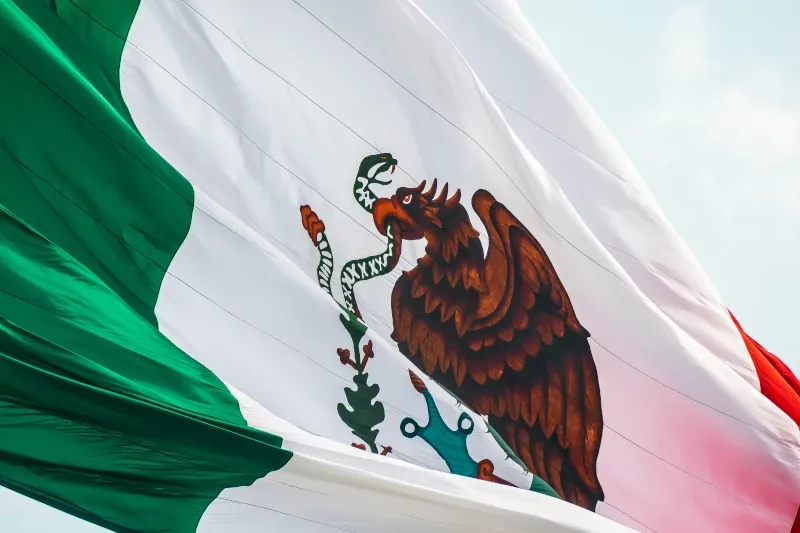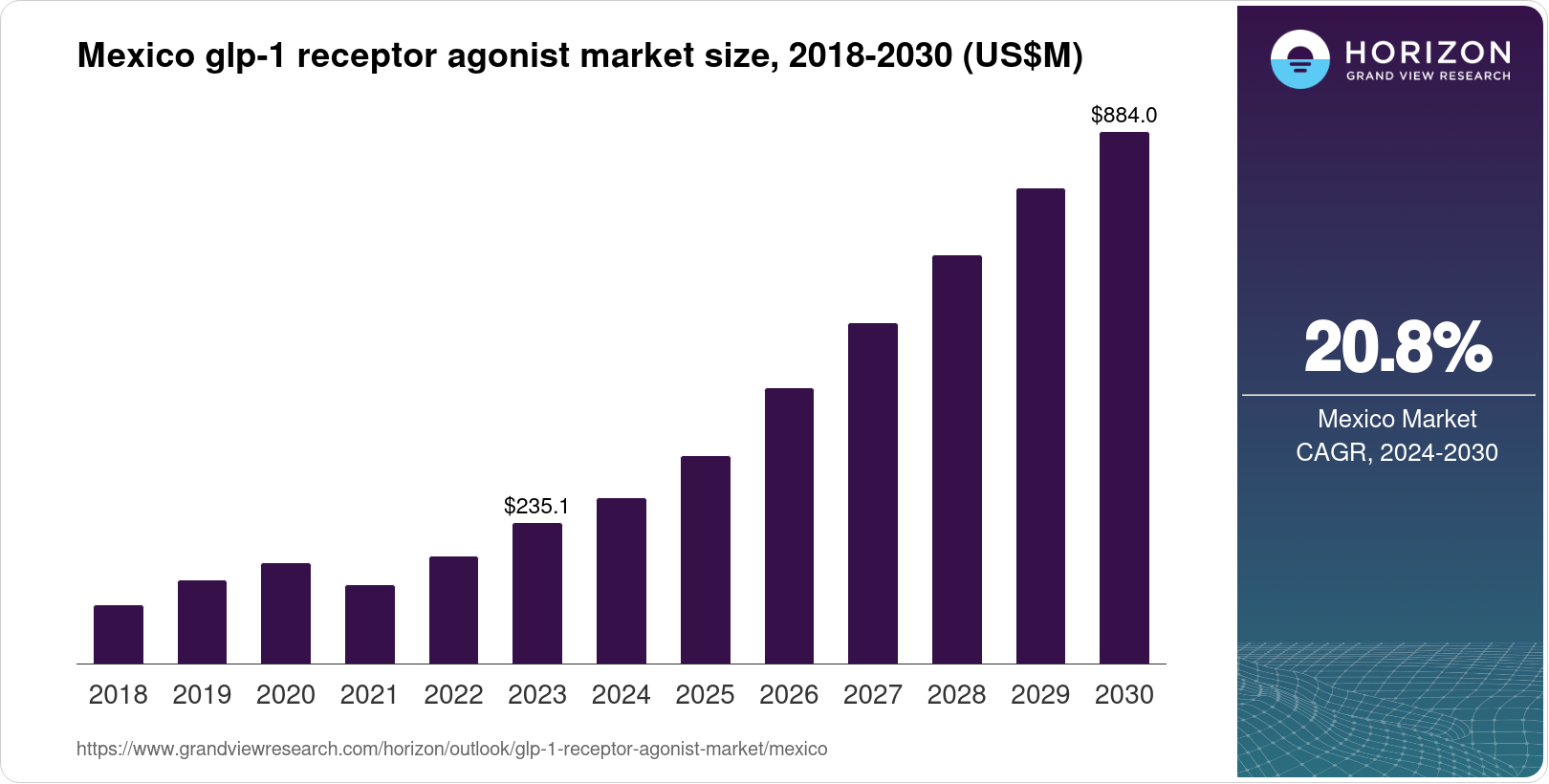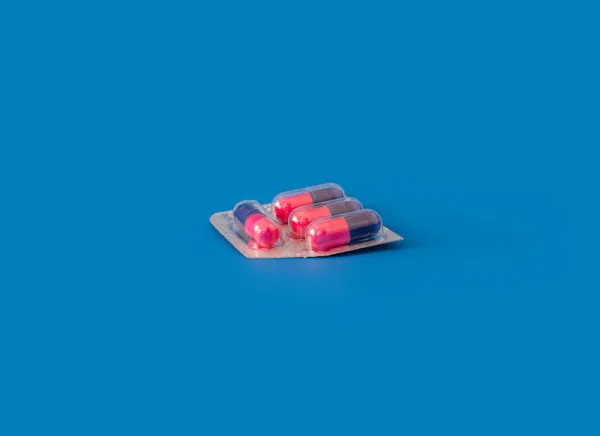Mexico and GLP1s
We explore GLP1 medical tourism, supply issues, and adoption of generic GLP1 Receptor Agonists in Mexico.

Most of the time we focus on developments within the US that relate to GLP1 receptor agonists, but it's important to note that rules (prices, regulation, etc) are completely different for different countries.
Check out our quick explainer
As you might expect, use of GLP1s is soaring in other countries as well, with projections for Mexico looking to be quite dramatic:

Again, the graph below is mostly projection (we're not in 2026), but it's illustrative and not completely unbelievable (though there is a wobble in 2020/2021, likely due to the Coronavirus epidemic):

Whether this projection comes to pass or not, companies are starting today to prepare for such a possible future, and the news of increasing sales for Wegovy, Ozempic, Mounjaro, and other GLP1s in other countries is a good reason to do so.
Want to read more about the GLP1 ecosystem in Mexico, and generics that might be spawned there? The rest of this article is no longer available for free – if you'd like to read the rest of our analysis, check us out on Substack:





